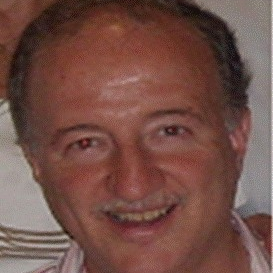DFT Applications to Biomolecules and Complex Reactions
A special issue of International Journal of Molecular Sciences (ISSN 1422-0067). This special issue belongs to the section "Molecular Biophysics".
Deadline for manuscript submissions: closed (30 April 2019) | Viewed by 21331
Special Issue Editor
Interests: molecular structure of DNA-RNA microhelices; molecular structure of nucleosides and nucleobases; DFT applications to different systems; infrared and Raman vibrational wavenumbers; scaling the wavenumbers
Special Issues, Collections and Topics in MDPI journals
Special Issue Information
Dear colleagues,
Density-functional theory (DFT), in its various forms, is a computational quantum method that has become an invaluable tool for many researchers across a range of disciplines. DFT methods have emerged during the past decades as a powerful methodology for the simulation of chemical systems, and they have become an important research tool for chemists, physicists, and materials scientists. They are less computationally demanding than other computational methods with similar accuracy, since they are able to include electron correlation in their calculations at a fraction of time of post-Hartree-Fock methodologies. Therefore, these DFT methods have a widespread application for investigating the electronic structure of many-body systems (mainly in the ground state), in particular, in atoms, molecules and condensed phases.
DFT methods are the best combination of accuracy and efficiency, and they are extensively used today in the prediction of biomolecular structure and the electronic properties of many systems, in computer-aided drug design, in catalysis and chemical reactivity, in surfaces and periodic solids, in transport, and in optical and magnetic properties, etc. The combination of DFT calculations with molecular dynamics promises to provide an efficient way to study structures and reactions in molecules and extended systems.
This Special Issue seeks to collect papers related to any aspect of DFT applications to biomolecules and complex reactions, including molecular simulations, structure predictions, inter-molecular interactions, and spectroscopic calculation, as well as theoretical developments and experiments.
Dr. Mauricio Alcolea Palafox
Guest Editor
Manuscript Submission Information
Manuscripts should be submitted online at www.mdpi.com by registering and logging in to this website. Once you are registered, click here to go to the submission form. Manuscripts can be submitted until the deadline. All submissions that pass pre-check are peer-reviewed. Accepted papers will be published continuously in the journal (as soon as accepted) and will be listed together on the special issue website. Research articles, review articles as well as short communications are invited. For planned papers, a title and short abstract (about 100 words) can be sent to the Editorial Office for announcement on this website.
Submitted manuscripts should not have been published previously, nor be under consideration for publication elsewhere (except conference proceedings papers). All manuscripts are thoroughly refereed through a single-blind peer-review process. A guide for authors and other relevant information for submission of manuscripts is available on the Instructions for Authors page. International Journal of Molecular Sciences is an international peer-reviewed open access semimonthly journal published by MDPI.
Please visit the Instructions for Authors page before submitting a manuscript. There is an Article Processing Charge (APC) for publication in this open access journal. For details about the APC please see here. Submitted papers should be well formatted and use good English. Authors may use MDPI's English editing service prior to publication or during author revisions.
Keywords
- DFT applications
- molecular interactions
- biophysics
- spectroscopic simulations
Benefits of Publishing in a Special Issue
- Ease of navigation: Grouping papers by topic helps scholars navigate broad scope journals more efficiently.
- Greater discoverability: Special Issues support the reach and impact of scientific research. Articles in Special Issues are more discoverable and cited more frequently.
- Expansion of research network: Special Issues facilitate connections among authors, fostering scientific collaborations.
- External promotion: Articles in Special Issues are often promoted through the journal's social media, increasing their visibility.
- e-Book format: Special Issues with more than 10 articles can be published as dedicated e-books, ensuring wide and rapid dissemination.
Further information on MDPI's Special Issue policies can be found here.






